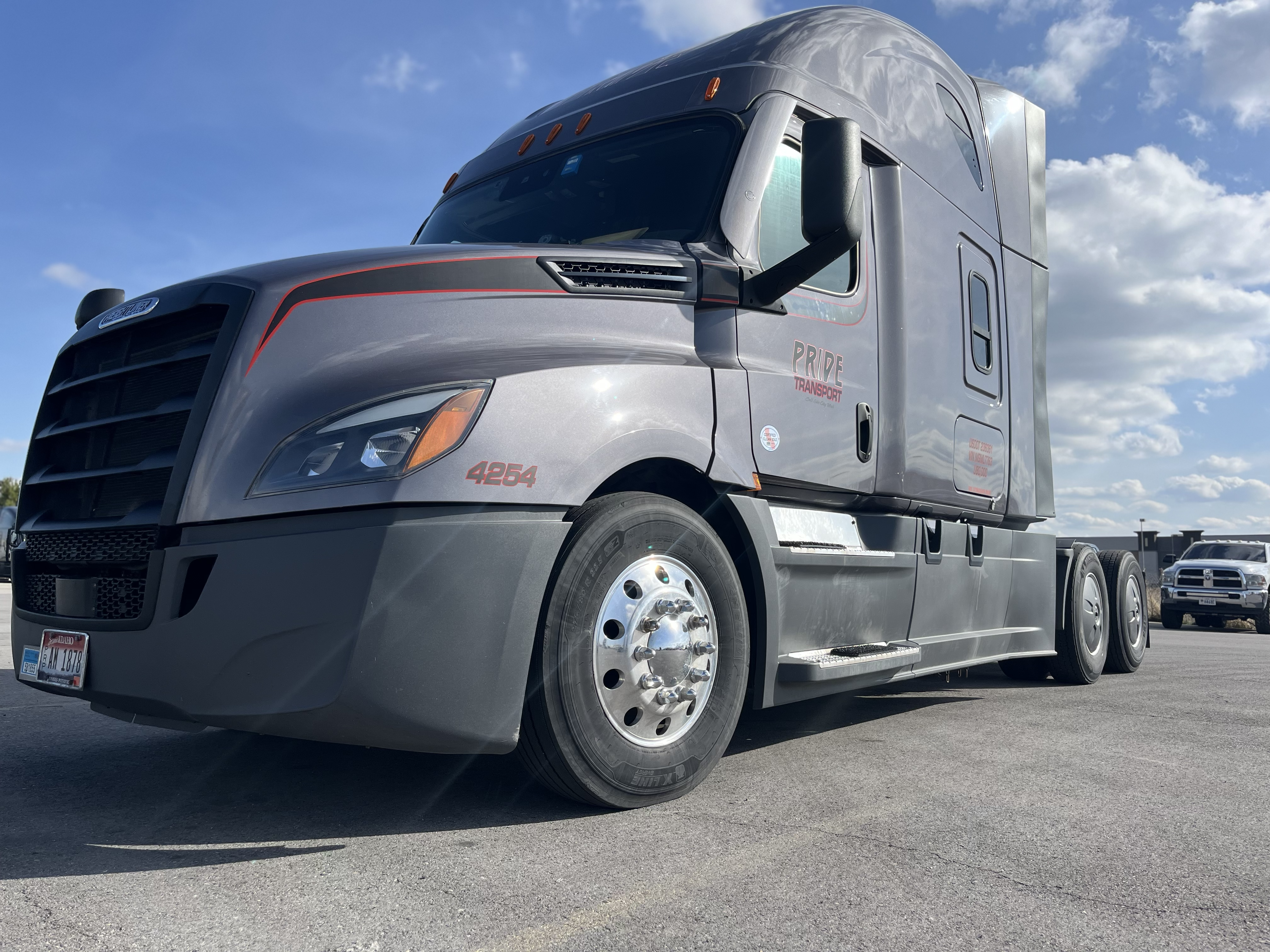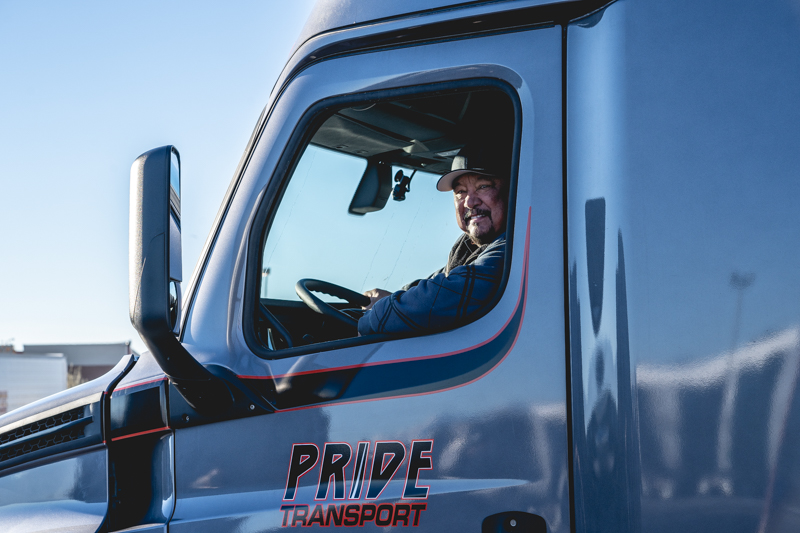by Pride Transport | Apr 25, 2024
Our country relies on trucking. From hauling consumer goods to construction materials, natural resources to food products, and countless commodities in between, trucking carries the freight that makes up our way of life. Several industries depend on truck transportation to keep their business operations on track while serving communities across the country and world.
But as important as trucking is, it’s easy for people to overlook the industry’s complexity and all of the parts that must work in harmony to keep everything running. Let’s look at the trucking industry, its economic impact, how it's regulated, and what the future holds.

The Trucking Industry at a Glance
There are a lot of ways to move freight to its intended destination (rail, air, water, etc.), but a truck will likely be involved somewhere along the journey. Many industries trust trucking for a majority of their transport needs because it’s fast, efficient, and offers more flexibility if plans have to change.
Adding to that flexibility is the variety of trucking operations to choose from. Trucks can be classified by load size, cargo type, and commodity, as well as by the type of truck used for transport. Most of us probably picture semi-trucks when thinking about trucking operations, but even those can haul a range of different trailers.
Most trucking companies can be categorized by the route distance they typically serve.
- Local drivers primarily operate within a city’s limits.
- Regional drivers complete routes within a single state or up to several nearby states.
- Long-haul or over-the-road (OTR) trucking is cross-country routes. These drivers can be on the road for weeks at a time.
Data from the U.S. Department of Transportation shows that there are over 750,000 motor carriers in the U.S. that own or lease at least one tractor, and 95.8% of those carriers operate 10 or fewer trucks.
Trucking’s Impact on the Economy
The economy is one of the go-to measuring sticks for determining a country’s strength and stability. The trucking industry makes huge contributions to our country’s economic viability. Check out some of these statistics for 2022:
- Total freight transported: 11.4 billion tons
- Total domestic tonnage shipped: 72.6%
- Gross freight revenue generated: $940.8 billion
- Percent of ground freight moved between U.S. and Canada: 61.9%
- Percent of ground freight moved between U.S. and Mexico: 83.5%
These numbers seem almost inevitable when considering just how many other industries depend on trucking. Here’s how total transportation spending looks for some of the most truck-dependent industries in 2022:
- Manufacturing: $316.6 billion total; $226.5 billion for trucking
- Retail Trade: $253.5 billion total; $146.62 billion for trucking
- Construction: $113.1 billion total; $105.26 billion for trucking
- Mining, Quarrying, and Oil and Gas Extraction: $40.5 billion total; $25.6 billion for trucking
- Agriculture, Forestry, Fishing, and Hunting: $21.5 billion total; $16.1 billion for trucking
If the spending on truck transportation is any indication, the industry is a steady source of employment for millions of people. In 2022, 8.4 million people worked in trucking-related jobs (excluding self-employed workers), and 3.54 million of those people were professional truck drivers. Women drivers accounted for 8.1% of all drivers in 2022, and 45.6% of drivers were minorities.
Who Regulates the Trucking Industry?
Trucking is regulated by a collection of federal and state agencies. Each agency is responsible for upholding rules and guidelines established by the other regulatory bodies to ensure safety for truck drivers and the driving public.
Starting at the top is the U.S. Department of Transportation (DOT). This federal agency oversees all travel within the United States, including aviation, railroad, transit, and maritime. Each form of transportation is assigned its own administrative program under the DOT. Trucking falls under the jurisdiction of the Federal Motor Carrier Safety Administration (FMCSA).
Other bureaus oversee different aspects of the trucking industry, but drivers will address FMCSA regulations the most in their daily work. The FMCSA specifically focuses on commercial motor vehicle safety and accident prevention, and its rules and regulations directly support the work of the DOT.
The FMCSA regulates trucking companies and drivers, meaning both groups must comply with agency directives. For trucking companies, that primarily means operating and maintaining equipment that meets agency standards (and providing records verifying compliance) and ensuring that their drivers are compliant.
Drivers must maintain the FMCSA’s high standards in order to continue operating as a driver. The following programs help to ensure that drivers meet safety requirements:
- Commercial Driver’s License Program: The CDL program tests drivers’ knowledge and driving abilities prior to becoming licensed truck operators.
- Hours of Service (HOS) Regulations: HOS limits the daily and weekly hours that drivers are allowed to work to better ensure driver safety and minimize the risk of fatigue.
- Drug and Alcohol Testing: The DOT prohibits any driver from operating their vehicle while under the influence of drugs or alcohol. Motor carriers are required to test employees.
- Medical Program: The Medical Program establishes health standards to determine if drivers are physically and mentally fit to operate CMVs. For example, all drivers are required to pass a regular DOT medical exam.
Truck drivers operate on the same roads and highways that millions of Americans travel every day, but with much larger vehicles that require special skills to operate. Regulatory agencies are a key part of keeping the roads safe for every driver.
The Future of Trucking
One thing we know for sure about the future of trucking is that the industry won’t go away anytime soon. But new technologies, electric vehicles, and rising fuel costs will cause shifts in how the industry operates.
Technology plays an ever-increasing role in the trucking industry. Trucking operations rely on digital fleet management systems, logistics software, real-time tracking, and other computer-based programs to run their businesses efficiently. Trucks include more technology, too, to provide more accurate insights into operating systems and opportunities for more efficient route planning. More trucking companies will rely on technology to optimize operations.
Harnessing tech for optimization is especially important now, with the cost of operating a truck continuing to grow. Research from the American Transportation Research Institute (ATRI) shows that, “The cost of operating a truck in 2022 was $2.251 per mile,” the first time that number has exceeded two dollars since ATRI first published its annual Operational Costs report in 2008. High fuel costs, repair and maintenance, and driver wages were the driving factors behind this increase, and they remain the top concerns among motor carriers.
Fuel costs are at least one reason for the increased interest in electric vehicles (EVs) and continued research and testing of autonomous trucks. EVs in particular offer a greener and more sustainable option for trucking company owners who are looking for alternative ways to manage operational costs; however, more research needs to be done to prove the long-term viability of these vehicles, especially in OTR driving.
Regardless of where the trucking industry goes next, Pride Transport will be along for the ride. We’ve been on the road for over 40 years, and we’ll continue adapting to industry changes and adopting best practices to ensure the safety of our drivers and the safe delivery of freight. Learn more about driving with Pride by checking out our driver jobs!
